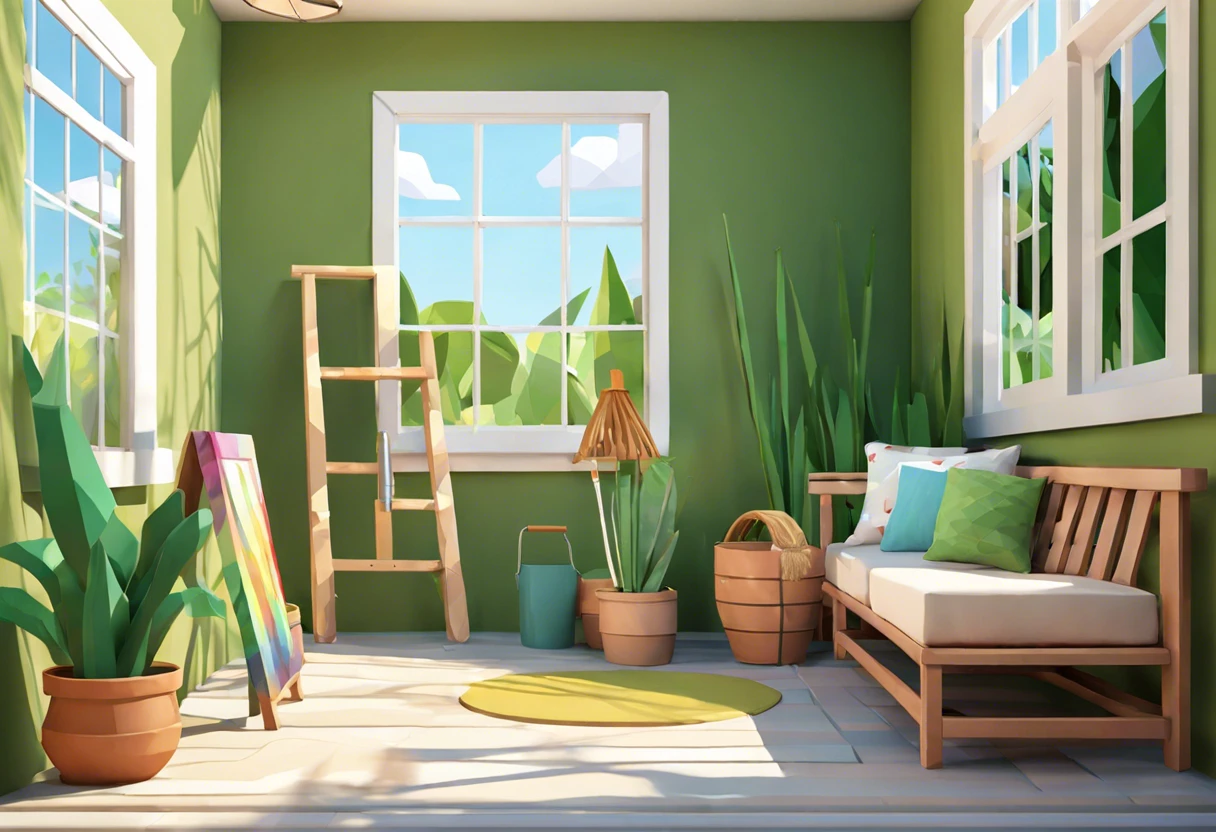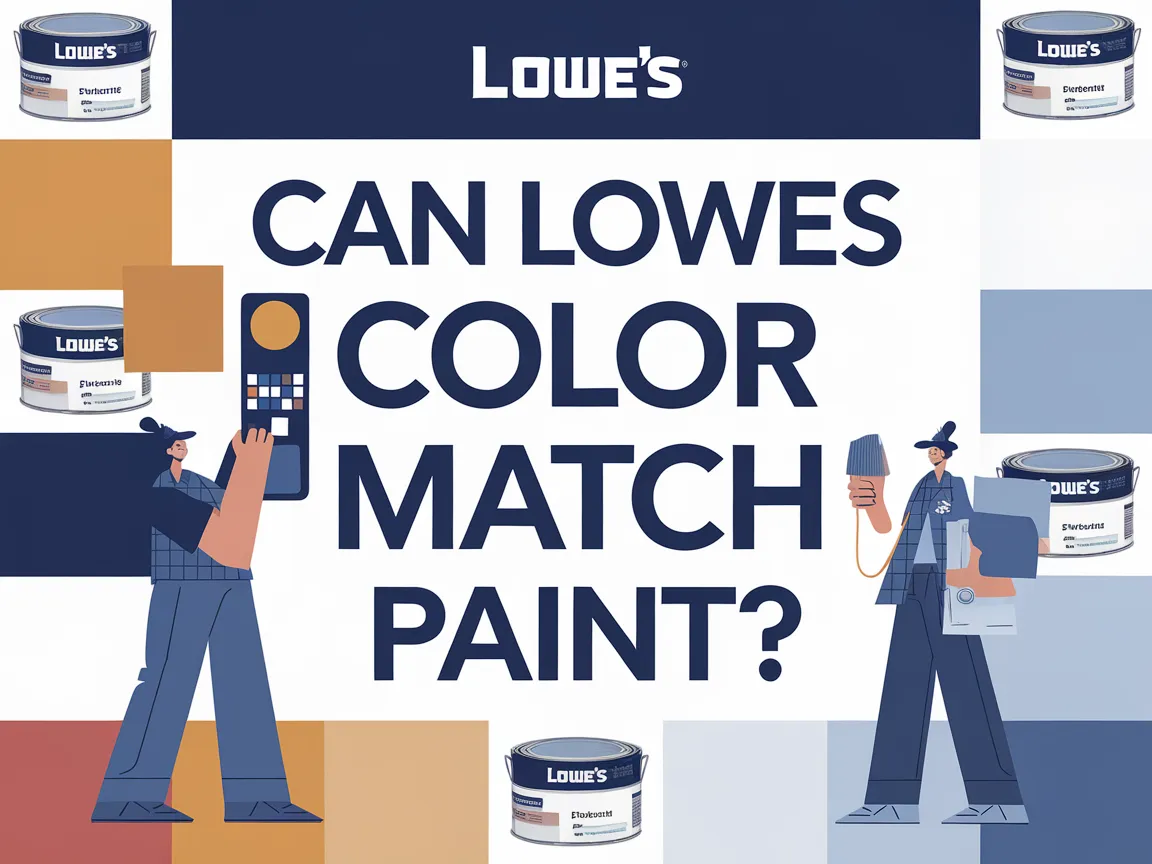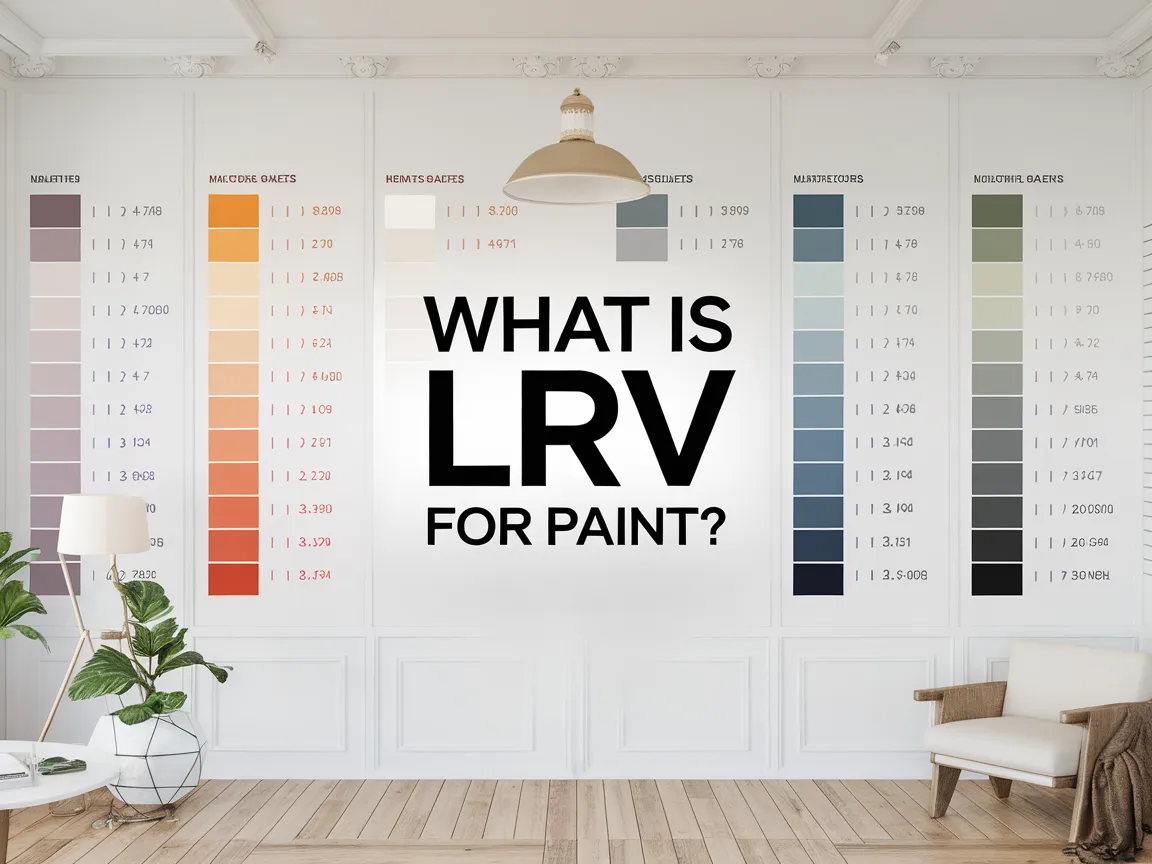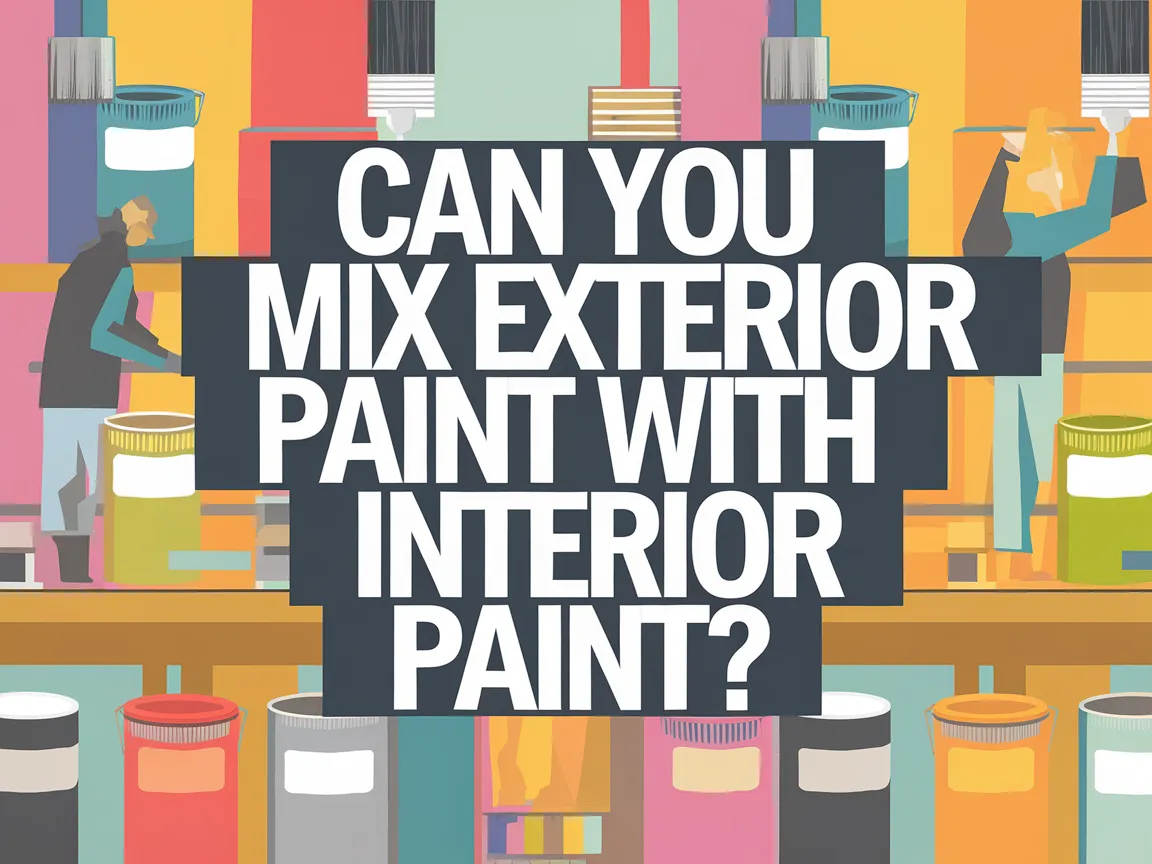Can You Use Indoor Paint Outside?
Published on: May 26, 2025 | Last Updated: January 7, 2025
Written By: Sarah McClintock
Indoor paint is a colorful mixture that you use to make walls look nice inside your home. It’s like magic, turning plain surfaces into happy, bright places!
So, can you use indoor paint outside? It’s important to know because using the wrong paint can lead to peeling or fading. I once painted a bench with indoor paint, and it didn’t last a month before it looked sad and chipped!
In this guide, we’ll explore essential points like the suitability of indoor paint outdoors, steps to prepare your surface, common issues you might face, and creative DIY project ideas. You’ll also learn how long untreated wood lasts if painted, how to tackle outdoor trim, and how to paint outdoor furniture.
Contents
- 1 Can You Use Indoor Paint Outside?
- 2 What is ‘Indoor Paint’?
- 3 Essential Considerations Before You Start
- 4 Steps to Take Before Using Indoor Paint Outdoors
- 5 Types Of Indoor Paint and Their Suitability for Outdoor Use
- 6 Factors Affecting the Performance Of Indoor Paint Outdoors
- 7 Common Issues When Using Indoor Paint Outside
- 8 Maintenance of Indoor Paint When Used Outdoors
- 9 Real-Life Case Studies: Indoor Paint Used Outdoors
- 10 Environmental Impact of Using Indoor Paint Outdoors
- 11 Alternatives to Indoor Paint for Outdoor Use
- 12 Cost Comparison: Indoor vs. Outdoor Paints
- 13 Frequently Asked Questions About Using Indoor Paint Outside
- 14 Conclusion
- 15 Additional Resources
Can You Use Indoor Paint Outside?
No, you shouldn’t use indoor paint outside. Indoor paint lacks UV protection and durability. It can peel and fade quickly when exposed to the elements. Always choose outdoor paint for outdoor projects.
What is ‘Indoor Paint’?
Indoor paint is a specialized formula for interior surfaces. It’s typically made with acrylic or latex binders, offering durability and a VOC (Volatile Organic Compound) level between 50 and 300 g/L for low-VOC options. When considering painting projects, you might wonder about temperature limitations for exterior applications and painting in cold weather conditions.
The Finishing Touch
A freshly painted wall is a blank canvas. The best way to bring your room to life is with a single piece of statement art that ties everything together.
Browse Wall Art at Big Wall DecorCan you use indoor paint outside? I once tried it on my patio, thinking it’d be fine, but quickly realized it wasn’t suitable for the outdoors. Spoiler alert: it didn’t hold up well against rain! If you’re wondering about alternative painting solutions, professional paint techniques can help you choose the right coating for different surfaces.
This experience made me curious about how long untreated wood lasts when painted with indoor paint. Untreated wood can last a few months at best, but using the wrong paint can speed up its decay. If you’re painting outdoor furniture, use outdoor-grade products to prevent wear and keep your art vibrant. When working with specialized surfaces like boats, you’ll want to ensure proper painting techniques for maximum durability protect your marine investments.
Essential Considerations Before You Start
What do you need for a successful project?
- Exterior Paint: Use a high-quality exterior paint like Behr Premium ($18.97 Per Gallon). It’s formulated for outdoor durability.
- Primer: A good primer, such as Zinsser Bulls Eye 1-2-3, is essential. It helps indoor paint bond better when applied outside.
- Sandpaper: Get 120-grit sandpaper. This smooths imperfections on the wood surface before painting and promotes a better finish.
- Paint Brushes and Rollers: Use synthetic brushes and 3/8-inch rollers, like Purdy, as they handle latex paint better and ensure a smooth application.
- Drop Cloths: Protect your surroundings with heavy-duty drop cloths, like Everbilt’s 9-foot by 12-foot cloth. They prevent spills and splatters.
You should now have a good understanding of important factors to consider before starting. In the next part, we’ll discuss steps for using indoor paint outdoors.
Also See: What Does a Paint Correction Do? Enhance Car Shine

The Finishing Touch
A freshly painted wall is a blank canvas. The best way to bring your room to life is with a single piece of statement art that ties everything together.
Browse Wall Art at Big Wall DecorSteps to Take Before Using Indoor Paint Outdoors
Here are steps to check if indoor paint can withstand outdoor conditions.
-
Assess Your Project Requirements
Identify the area you’re about to paint. Consider factors like sunlight exposure, moisture levels, and temperature changes, as these affect paint durability.
Don’t forget to consider the surface materials! Wood, metal, and concrete react differently with indoor paint outdoors.
-
Select the Right Indoor Paint
Check paint labels for options designed for outdoor durability. Look for mildew-resistant properties, and remember that paints labeled “satin” or “semi-gloss” perform better in moisture.
A high-quality acrylic latex paint can dramatically improve longevity under outdoor conditions, extending its life to over five years in some cases.
-
Prepare the Surface Properly
Clean the surface with soap and water to remove dirt, grease, and residue. Scrape off any peeling paint, and sand the surface if necessary to ensure smooth application.
I once skipped this step on a garden bench, and the paint didn’t stick well. A smooth surface allows the paint to bond properly, enhancing performance against the elements for years.
-
Apply a Primer if Necessary
If your surface is bare wood or metal, applying an appropriate primer is essential. Use a primer designed for exterior use to improve paint adhesion and block stains.
This step helps your paint color adhere better, ensuring a uniform finish and extending the life of your chosen indoor paint.
-
Monitor Weather Conditions
Check weather forecasts before starting your project. For best results, apply paint when it’s dry, ideally at temperatures between 10ºC and 30ºC (50ºf and 86ºf), as extremes can affect curing.
A good buffer is 24 hours without rainfall to protect your newly painted item. Don’t rush—the weather has its unique patterns.
We’ve wrapped up precautions, preparation, and best practices here. Let us turn our attention to the different kinds of indoor paint and their outdoor compatibility.
Types Of Indoor Paint and Their Suitability for Outdoor Use
Let’s discuss the types of indoor paint suitable for outdoor use: latex, oil-based, acrylic, and chalk paint.
-
Latex Paint
Latex paint is water-based and easy to clean. It’s flexible but breaks down quickly in UV light, lasting about 3-5 years outdoors.
-
Oil-based Paint
This type forms a hard, durable finish and resists moisture. However, its outdoor durability is limited, usually lasting around 5-7 years when applied correctly.
-
Acrylic Paint
Acrylic paint offers excellent adhesion and flexibility, making it a strong choice for outdoor use. It lasts around 10 years but can be expensive.
-
Chalk Paint
This paint has a matte finish and creates an antique look. However, it’s not recommended for outdoor use as it washes off easily in the rain.
I’ve found that acrylic paint is my preferred choice. It’s versatile and withstands the elements better than others, especially in high UV areas.
We’ve wrapped up the types of indoor paint and their outdoor suitability here. Let us turn our attention to factors impacting indoor paint performance outdoors.
Factors Affecting the Performance Of Indoor Paint Outdoors
What factors influence using indoor paint in outdoor settings?
-
Durability: Indoor paints aren’t designed to withstand outdoor elements, leading to rapid deterioration.
-
Temperature Resistance: Indoor paint can crack in extreme temperatures, especially in direct sunlight.
-
Moisture Exposure: Indoor paint doesn’t block moisture effectively, increasing the risk of peeling or mold growth.
-
Color Fading: The pigments in indoor paint fade faster outdoors due to UV rays and weather conditions.
We have now covered factors impacting indoor paint performance outdoors. Next, we will discuss common problems encountered when using indoor paint outside.

Common Issues When Using Indoor Paint Outside
Last summer, my friend used indoor paint outside. It wilted in a downpour, ruining his fence. Indoor paint isn’t made to handle moisture, UV rays, or temperature changes.
To fix this, use 100% acrylic exterior paint. It’s designed for outdoor use and lasts longer. Brush on two coats for the best results; most brands recommend waiting 24 hours between coats.
Maintenance of Indoor Paint When Used Outdoors
Wondering how to keep your project looking fresh? Here’s what you need for maintenance.
- Regular Cleaning: Clean your painted surfaces every 2-3 months to remove dirt and grime. Use mild soap and water—nothing harsh!
- Inspections: Every 6 months, check for signs of peeling, fading, or wear. Early detection helps you address issues before they worsen.
- Touch-Ups: Have a small can of matching paint handy. Quick touch-ups can save your project from looking worn out and keep it vibrant.
- Re-Sealing: Apply a sealant every year for extra protection against moisture and UV rays. This can extend the paint’s life significantly!
Real-Life Case Studies: Indoor Paint Used Outdoors
Let’s take a look at a few real examples of using indoor paint outdoors.
| Case | Project Type | Outcome | Duration Before Issues |
|---|---|---|---|
| Homeowner A | Garden Bench | Peeling and Fading | 1 Month |
| Homeowner B | Flower Pots | Mildew Growth | 2 Months |
| Homeowner C | Wooden Deck | Cracking and Chipping | 3 Months |
These examples show how using indoor paint can lead to common issues quickly. Even though it might seem tempting, you’ll save yourself time and hassle by choosing the right paint for outdoor projects! If you want to protect your painted surfaces effectively, clay bar paint protection techniques can help maintain your exterior paint’s quality and durability.
The Finishing Touch
A freshly painted wall is a blank canvas. The best way to bring your room to life is with a single piece of statement art that ties everything together.
Browse Wall Art at Big Wall Decor
Environmental Impact of Using Indoor Paint Outdoors
Thinking about the planet? Let’s explore the environmental effects.
- VOC Emissions: Indoor paints typically contain higher VOCs than exterior paints. When used outside, they can pollute the air more.
- Waste: If indoor paint fails outdoors, it leads to excessive waste. You’ll need to dispose of the peeling and fading layers, increasing landfill burden.
- Alternative Options: Choosing outdoor and eco-friendly paints reduces these impacts, ensuring your projects are sustainable and safe!
Alternatives to Indoor Paint for Outdoor Use
Not sure what to use instead of indoor paint outside? Let’s explore the alternatives that will give you long-lasting, vibrant results.
-
Acrylic Exterior Paint
This option is a star player! It has excellent color retention, moisture resistance, and can last over a decade with proper care.
-
Oil-Based Exterior Paint
Although a bit trickier to clean up, it offers a tough finish that can stand up to the elements for 5-10 years, especially in high-traffic areas.
-
Chalk Paint with Sealer
Great for a vintage look! When used with a good outdoor sealer, it can withstand mild outdoor conditions, but reapplication is a must.
Cost Comparison: Indoor vs. Outdoor Paints
Understanding the costs can help you budget for your outdoor projects. Here’s a quick breakdown:
| Type of Paint | Average Cost (USD) | Durability (Years) |
|---|---|---|
| Indoor Paint | $15-30 per gallon | 1-3 |
| Acrylic Exterior Paint | $25-60 per gallon | 5-10 |
| Oil-Based Exterior Paint | $30-70 per gallon | 5-10 |
| Chalk Paint with Sealer | $20-50 per quart | 1-3 (with proper sealing) |
Investing a little more can make a significant difference for your outdoor projects. Always choose outdoor-grade products to ensure longevity!
Frequently Asked Questions About Using Indoor Paint Outside
What Happens if I Use Indoor Paint Outside?
When you use indoor paint outside, it typically won’t hold up against the elements. Indoor paint lacks the necessary UV protection and moisture resistance, leading to fading, peeling, or chipping within weeks to months.
Are There Any Indoor Paints That Are Safe for Outdoor Use?
Yes, certain indoor paints offer enhanced durability and can withstand outdoor conditions. Look for paints labeled as “multi-surface” or “interior/exterior” paint, which often include additives for added protection against weather. If you’re exploring alternative surface treatments, you might want to discover techniques for painting clay surfaces.
How Can I Make Indoor Paint More Durable for Outdoor Use?
You can make indoor paint more durable for outdoor use by adding a high-quality clear sealant. Sealants improve moisture resistance and UV protection, extending the life of the paint. Choose a sealant designed for outdoor use.
What Type Of Indoor Paint Should I Choose for Occasional Outdoor Use?
If you plan to use indoor paint occasionally outside, go for acrylic latex paint. It offers better adhesion, is easier to clean, and holds up better than other indoor options when faced with outdoor conditions. When painting in cooler temperatures, you’ll want to be mindful of specific texturing techniques that ensure proper painting in cold weather.
How Long Will Untreated Wood Last Outside if Painted?
Untreated wood painted with a high-quality outdoor paint can last up to 5-10 years first before needs total replacement. However, consistently exposed wood without proper treatment might begin to degrade within a year. If you’re looking to achieve the perfect blonde paint finish for your wooden surfaces, creating blonde color paint can help protect and enhance your wood’s appearance.
How to Paint Outdoor Trim Effectively?
To paint outdoor trim effectively, you’ll need to start with clean, dry surfaces. Using a primer suitable for exterior wood enhances adhesion and durability, followed by two coats of high-quality exterior paint for the best results. If you’re considering alternative materials like polycarbonate panels, you might want to explore painting polycarbonate roof panels with specialized techniques.
Conclusion
Phew, we covered a lot. We discussed indoor paint and related topics, its types, the essential considerations before starting, steps to take before using it outdoors, color palettes, suitability, factors affecting performance, common issues, finishing touches, and DIY project ideas.
I trust these insights have been helpful. So, can you use indoor paint outside? Simply put, it’s risky; it may chip or fade quickly due to weather, and its durability just doesn’t measure up for outdoor use, especially without proper preparation.
For more information and resources, feel free to visit Paint Answers.
Additional Resources
- Loomis, A. (2011). Figure Drawing for All It’s Worth. New York, NY: Titan Books.
- Can I Use Interior Paint Outside?
- How To Make Interior Paint Into Exterior Paint – Red Lasso
- How to Make Interior Paint Into Exterior Paint? – Housekeepingbay









